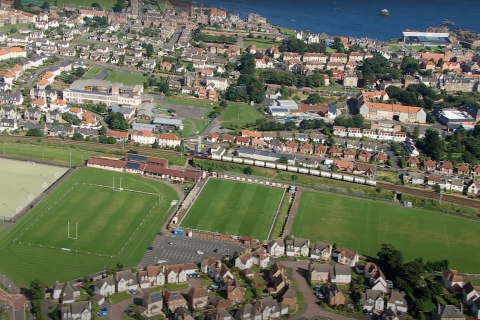German railway network shrinks, demand grows, future remains unclear

Between 1995 and 2019, the German railway network has shrunk by 15 per cent. Simultaneously, passenger and freight traffic grew by 42 per cent and 83 per cent, respectively. “It’s getting tighter and tighter in the German railway network, and we should not be deceived by the increased capacities caused by the pandemic”, said Dirk Flege, managing director of Allianz pro-Schiene, a non-profit pro-rail interest group.
The situation is getting pressuring in the Central European country, which is also the strongest European rail freight country. The need for measures to encourage rail to grow and reach its future goals is more urgent than ever. “Without a rapid expansion of the rail network, there is a risk of blockages on Germany’s tracks if the economy picks up again after the end of the current crisis”, added Flege.
Rail budget increased, and so must the network
At the beginning of the year, German Chancellor Angela Merkel made Germany’s intentions for rail pretty clear. “Only with rail will we achieve our climate goals. We want more goods to be transported by rail”, she declared. Almost a month later, the German minister of transport Andreas Scheuer commented that “the shorter and easier the route to rail, the more likely companies will use it to transport their goods. This is why we support private investments, promote the construction of transhipment stations and accelerate planning”.
Indeed, the German state approved a funding program of 200 million euros for rail. However, the investing focus seems to divert from the country’s actual issues. “A modern, high-performance infrastructure with sufficient capacities is a basic requirement to advance climate-friendly rail transport further,” Flege mentioned. “The federal government has increased the rail budget in recent years. But the funds were mainly used to renovate and maintain the existing network”.
With the current planning, the German state might manage to stop the network’s shrinking, but it’s almost impossible to bring it to its previous state. Consequently, at the moment, the country needs also to start focusing on construction and not just maintenance of the preexisting infrastructure. According to Allianz pro-Schiene, Germany needs “an investment offensive for new construction and expansion to correct the mistakes of the past”.
Impact on rail’s market share
“The federal government can only achieve the goal of doubling the number of passengers and expanding the market share of the freight railways to over 25 per cent by building and expanding the railways”, continued Flege. And this perspective has a very solid basis. Creating the needed capacities is critical to attract more customers to rail and achieve the modal shift. Especially in Germany, this is more urgent than in any other country.
Why? And why especially now? Because to everyone’s surprise, during 2020, the market share of freight transport in Germany decreased from 19 per cent to 17,5 per cent. The decrease is not massive, but at the same time, road haulage experienced a slight increase. This development was shared by Mattias Castel, a politician and member of the German parliament and is quite alarming since it proves that the rail sector fend’s off its long-term goals.
Consequently, investing in rail is critical and should take place in an innovative and productive way. If rail is to become the future transportation mode, it needs substantial attention, progress, and space to grow and reach its potential.
You just read one of our premium articles free of charge
Want full access? Take advantage of our exclusive offer




